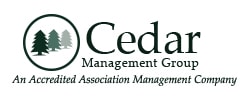Without governing documents, a homeowners association would not exist or be able to function. Each document serves a specific purpose in the community and carries varying degrees of authority. Any provisions in a document higher on the scale of hierarchy will always trump inconsistent provisions in a lower document.
First and foremost in the hierarchy of governing documents are the recorded map and the Declaration of Covenants, Conditions, and Restrictions (also known as CC&Rs). The recorded map shows the boundaries of the community and the individual lots with corresponding numbers.The CC&Rs define ownership of all elements of the community – what elements are considered common areas, limited common elements, and lots or units – and establish the maintenance and repair responsibilities of each. Powers for funding the association via assessments and budgeting, and the purposes and goals of the association are also included. The largest portion of the CC&Rs is the restrictions, or protective standards for the community. Some CC&Rs are very general stating the board of directors has the ability to write additional rules and regulations as they see fit, and others are very explicit. Explicit rules can include the type and size of fencing and other architectural guidelines, parking regulations, and leasing and pet restrictions.
The articles of incorporation sit just below the CC&Rs. These articles legally establish the nonprofit corporation, set general powers of the association, and allow the formation of the board of directors.
After the articles of incorporation, the association by-laws give the procedures and rules for governmental operations. Notice requirements, meeting procedures, election procedures, and officers and roles are all included.
The CC&Rs give the board of directors the power to develop more a more concise rules and regulations. This document provides a detailed and clear explanation of the restrictions found in the CC&Rs, and additional rules and procedures that were not expressly listed but are necessary for the benefit of the community. These include architectural guidelines, collections and covenant enforcement procedures, and provisions for how the annual meeting is conducted. Anything written in the rules and regulations cannot conflict with any higher ranking document. They must also be consistent with any applicable federal, state, or local laws.
Each of the documents begins with a list of definitions of the major terms used. These definitions aid in the understanding of the provisions that follow as the documents are written in legal terms that most people are not familiar with.
Most governing documents can be amended if need be, though the process may be difficult and must follow the guidelines for amendment outlined in the document itself. Always consult with the association’s attorney for assistance in doing so to ensure the process is completed appropriately.
Understanding the governing documents of an association is one of the first steps in making the homeownership experience the best it can be.

